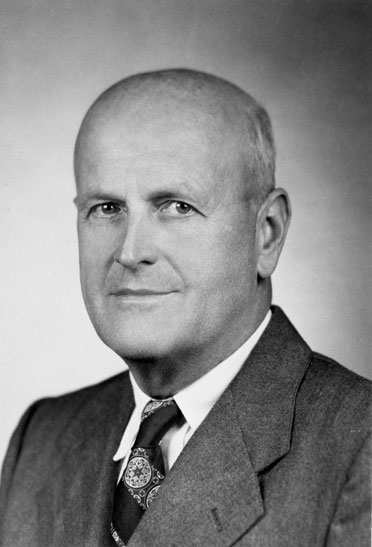Ross Gunn was an American physicist and engineer who aided in the development of isotope separation methods during the Manhattan Project.
Early Life
While in high school, Gunn developed an interest in radio. He built a wireless receiving device without help, and then built one of the first long-range amateur wireless station in Northern Ohio. Gunn entered Oberlin College in 1915, but transferred to the University of Michigan after two years for their program in electrical engineering. World War I further interrupted his studies, as Gunn enlisted as a private in the Signal Corps and was called into active duty. He received his B.S. degree in 1920 and then an M.S. degree in Physics the next year, also from the University of Michigan.
For the next three years, Gunn worked as a radio research engineer for the U.S. Air Service. There he helped develop a radio range aircraft navigation system and a device for controlling pilotless airplanes using radio. He also made a number of cross-country instrument flights. Gunn than began work as an instructor of engineering physics at Yale, where he earned his Ph.D. in Physics in 1926.
In 1927, Gunn started work in the Radio Division of the U.S. Naval Research Laboratory. In 1933, he became Superintendent of the Mechanics and Electricity Division, and the next year he was named technical advisor to the entire laboratory.
Scientific Contributions
Gunn is credited with helping develop the idea for a nuclear-powered submarine. In 1939, Gunn sent a memorandum to the chief of the Navy’s Bureau of Ships explaining the potential advantages of applying nuclear energy to propulsion. In the early 1940s, Gunn helped prepare for the submarine’s construction, studying reactor designs and submarine advances in order to prepare a report on the feasibility of a nuclear-powered submarine.
Gunn also helped foster the development of the liquid thermal diffusion method of separating uranium isotopes. After learning about Philip Abelson’s research into the process, Gunn provided him financial support. When Abelson’s efforts showed signs of success, Gunn invited him to work at the Naval Research Laboratory. Abelson’s lab there was, for a time, the most successful isotope separation facility in the world. As a member of the Committee on Uranium and later the S-1 Committee, which coordinated research into uranium long before the Manhattan Project started, he brought this research to the attention of the committee’s chairman Lyman J. Briggs. Abelson’s method was piloted in a facility at the Pennsylvania Navy Yard and then used in the S-50 plant at Oak Ridge. This became the first stop on the uranium enrichment pathway. On September 4, 1945, Gunn received the Navy Distinguished Civilian Service Award ‘by reason of his outstanding contribution to the development of the atomic bomb.”
Later Life
By the end of World War II, Gunn was simultaneously superintendent of the Mechanics and Electricity Division, superintendent of the Aircraft Electrical Division, technical director of the Army-Navy Precipitation Static project, and technical advisor to the naval administration. Hoping to expand his work in the study of weather science, Gunn left the Naval Research Laboratory and became director of the Physical Research Division of the United States Weather Bureau, now the National Weather Service. Gunn’s task was to plan and launch a fundamental study into the basic physics of weather. A central part of this project was an investigation of the process of precipitation. During this time, he developed a number of novel instruments to aid the study of weather.
Gunn retired from the Weather Bureau in 1957. He served as a consultant for the U.S. Atomic Energy Commission from 1958 to 1965, and became a member of the American University faculty in 1958. Over his career, Gunn published numerous papers and received over forty patents. He died on October 15, 1966, at the age of 69.
For more information on Ross Gunn, see his National Academy of Science biography, written by Philip Abelson.





